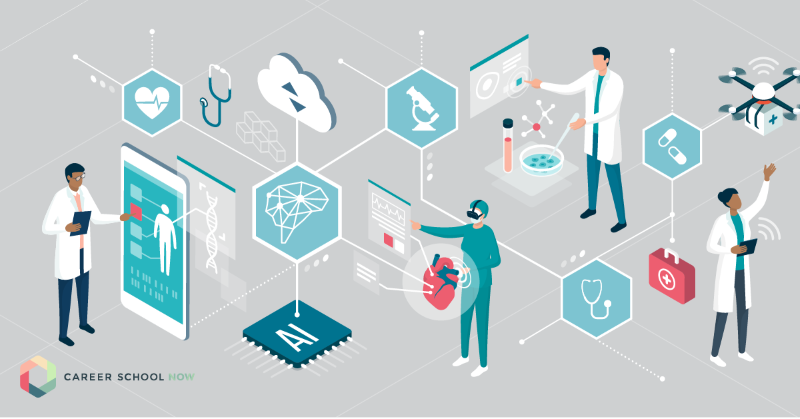Why Medical Administration is Vital for Smooth Health Care Workflow
Why Medical Administration is Vital for Smooth Health Care Workflow
Blog Article
Best Practices in Medical Management for Improving Efficiency and Minimizing Costs
In the ever-evolving landscape of medical care, the quest of finest methods in clinical management is paramount for improving effectiveness and curbing expenditures. By integrating innovative modern technologies such as electronic health and wellness records and telemedicine, medical care companies can enhance operations and enhance client treatment. Technology alone is not a remedy; maximizing source allocation and cultivating joint communication amongst treatment groups are equally crucial. As organizations aim to balance high quality and expense, what strategies should be focused on to attain these double goals? The solution to these inquiries hold the trick to a much more lasting healthcare system.
Leveraging Advanced Innovation
In today's rapidly developing healthcare landscape, leveraging sophisticated technology is no longer optional however important for effective clinical administration. The assimilation of electronic solutions right into medical care systems has actually transformed the method facilities run, enhancing procedures and boosting individual treatment. Electronic Health Records (EHRs) are critical, giving extensive patient data that can be accessed promptly by accredited employees, hence lowering redundancy and minimizing mistakes. By centralizing person information, EHRs get rid of the requirement for troublesome documentation and promote seamless interaction among doctor.
Telemedicine is another technological development that has changed patient communication. It uses comfort for both people and healthcare specialists by making it possible for remote assessments, which can minimize the need for in-person sees and optimize consultation scheduling. In addition, telehealth platforms can expand medical care access to rural or underserved locations, bridging voids in care shipment.
Furthermore, using Artificial Intelligence (AI) and machine discovering is becoming progressively prevalent in predictive analytics, permitting for early detection of possible wellness issues and even more enlightened decision-making. These innovations, when integrated efficiently, can enhance diagnostic precision and customize patient therapy plans, ultimately resulting in enhanced healthcare end results and functional effectiveness.
Optimizing Source Appropriation
Reliable resource allocation is essential for maximizing the performance of medical administration. By purposefully taking care of resources such as personnel, devices, and finances, healthcare centers can substantially boost their operational efficiency, enhance individual results, and minimize unnecessary expenditures. The initial step in maximizing resource allotment includes performing a comprehensive analysis of current assets and recognizing locations where sources might be underutilized or overextended. This evaluation ought to be data-driven, making use of metrics and analytics to educate decision-making processes.
Prioritizing source appropriation based on person requirements and solution needs is vital. Executing adaptable staffing versions can also maximize labor sources by readjusting employees allowance in reaction to rising and fall person volumes.
Funds ought to be diligently monitored and assigned with critical insight to support both temporary operational requirements and lasting institutional goals. This consists of investing in training programs that enhance personnel competencies and adopting energy-efficient practices that lower functional prices (medical administration). Ultimately, an enhanced resource appropriation approach fosters a sustainable healthcare atmosphere that is receptive, efficient, and economically prudent
Streamlining Process Procedures
When health care facilities goal to boost operational performance, improving operations procedures ends up being a crucial focus. Reliable process lessen redundancy, remove unneeded steps, and enhance control amongst healthcare experts. This approach not only increases service distribution but additionally boosts the quality of patient care.

Next, technology integration plays a substantial function in simplifying process. Implementing electronic health and wellness documents (EHRs) and digital doctor order entry (CPOE) systems decreases paperwork, lessens human mistake, and guarantees information comes to all relevant employees. In addition, leveraging telemedicine systems can simplify patient consultations and follow-ups, decreasing the pressure on physical facilities.

Inevitably, structured workflows cause cost decreases and improved person contentment, cultivating a more lasting medical care atmosphere.
Enhancing Data Management
Structure upon structured process, maximizing information monitoring comes to be a vital component beforehand healthcare administration. Reliable information administration systems are critical for keeping accurate person my explanation records, enhancing decision-making, and ensuring conformity with regulatory standards. By executing robust information management solutions, medical care centers can improve the quality of client treatment while at the same time lowering operational expenses.
One trick facet of improving data monitoring is the assimilation of sophisticated digital wellness document (EHR) systems. These systems help with the seamless exchange of patient details throughout various departments, lowering duplication of tests and lessening errors. A properly designed EHR system supports data analytics, making it possible for health care carriers to identify fads and make informed choices concerning patient care.
Moreover, safeguarding individual data is extremely important. Taking on detailed cybersecurity measures, consisting of file encryption and regular audits, makes certain the stability and discretion of sensitive info. This not just shields people however additionally preserves the institution's reputation.
Purchasing staff training is an additional important factor. Educating medical care professionals on data administration methods improves their capacity to properly use modern technology, resulting in enhanced patient end results. Finally, improving data management via innovative modern technology and detailed training is crucial for achieving performance and price reduction in medical administration.
Fostering Collaborative Interaction
A critical element beforehand medical management is promoting collaborative visit this site right here communication among health care experts. Reliable communication is extremely important for ensuring seamless individual care, enhancing treatment end results, and reducing errors. By encouraging open dialogue and control across multidisciplinary teams, health care organizations can improve their operational efficiency and decrease unnecessary expenses.
Central to this method is the combination of interaction technologies such as electronic health and wellness documents (EHRs) and protected messaging systems, which facilitate the fast exchange of vital client info. These devices enable healthcare providers to gain access to and share information in actual time, making sure that all staff member are informed and straightened in their decision-making processes. Regular group meetings and interdisciplinary rounds can further promote a society of cooperation and responsibility.
Training programs concentrated on boosting communication abilities are likewise vital. Eventually, promoting collective interaction leads to improved medical care delivery and price savings.

Verdict
Including sophisticated innovation, such as electronic wellness documents and telemedicine, together with maximized source appropriation and structured process procedures, is important for improving performance in clinical administration. Efficient information monitoring and fostering joint interaction amongst medical care groups are important for minimizing redundancies and enhancing care quality. By prioritizing preventive care and engaging in top quality renovation initiatives, medical care organizations can attain substantial cost savings and improved client results, therefore guaranteeing lasting medical care shipment in an increasingly complicated atmosphere.
Report this page